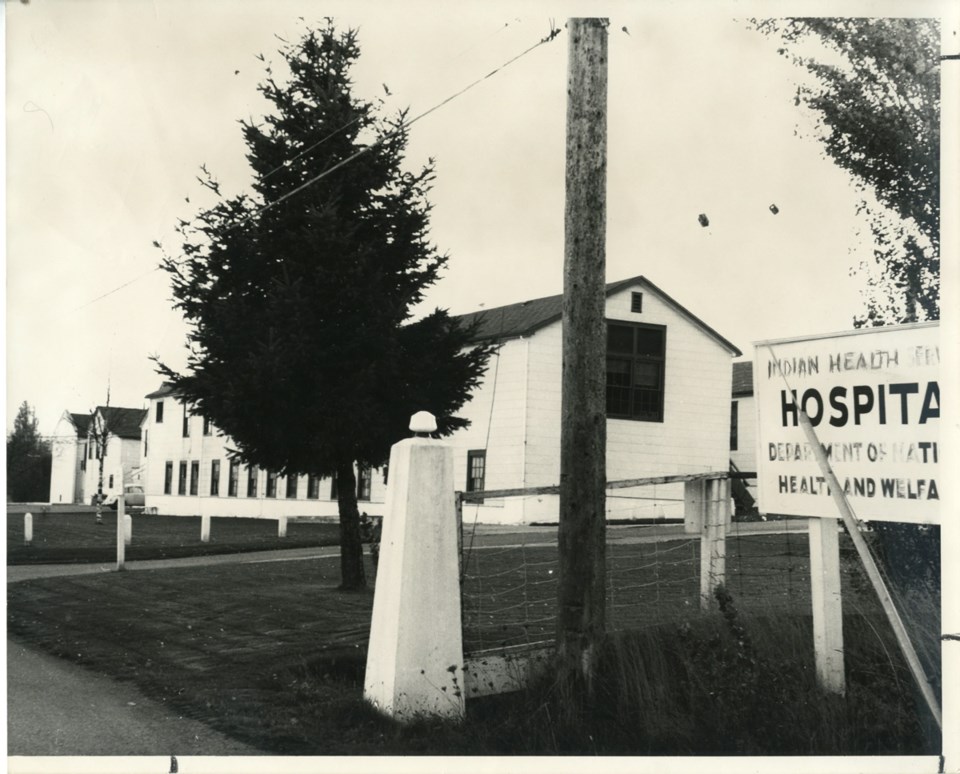Gail Peterson Gus remembers well the rough, jagged, red scar down her mother June’s back. She also recalls meeting a white woman her mother’s age at a Port Alberni pool who had also had her lung removed at a young age.
“It was a beautiful scar, clean and sharp,” Gus said in an interview. “My mom’s scar was like a bad pumpkin carving. She had been butchered.”
Gus, a Tseshaht woman who lives near Port Alberni, said June Watts spent seven years in a residential school, where she contracted tuberculosis, then 10 years in the Nanaimo Indian Hospital that closed in 1966. Watts died in 1992.
As the child of an “Indian hospital” survivor, Gus may be entitled to compensation following the Federal Court of Canada’s decision in January to certify a $1.1-billion class-action lawsuit against the federal government for its “Indian hospital” policy.
The lawsuit was brought by three law firms — including Klein Lawyers in Vancouver — on behalf of hundreds of former patients of 29 “Indian hospitals” that operated between 1945 and 1981.
That includes patients from the Nanaimo Indian Hospital (the second largest in Canada), the Coqualeetza Indian Hospital in Sardis and the Miller Bay Indian Hospital in Prince Rupert.
According to a statement of claim filed in Ontario in January 2018, the hospitals were established to deal with a tuberculosis outbreak that was hitting Aboriginal communities at a greater rate than the rest of the population. However, they were used for Indigenous patients with any ailment.
The rules governing these facilities were different from regular hospitals. For example, if a patient left the facility without being formally discharged, they would be arrested. They were also served by foreign doctors not authorized to work in regular hospitals.
According to a 1962 government commission, “the quality of care of Indian and Northern Health Services hospitals is not comparable with that provided in community hospitals in the same area.”
More disturbing, though, were the claims of physical, psychological and sexual abuse that are alleged to have occurred at the facilities. This included beating with sticks, isolation in hospital rooms, food and drink deprivation, physical restraint, and “forced feeding and forcibly requiring class members to eat their own vomit.”
One former patient, Ann Cecile Hardy — a Métis woman who lives in Edmonton — said she spent four months at Edmonton’s notorious Charles Camsell Indian Hospital, where forced sterilization occurred, and during that time was sexually abused by medical technicians and witnessed other patients being sexually abused.
As part of the court process, an affidavit was filed by Simon Fraser University professor Mary-Ellen Kelm.
In her affidavit, Kelm wrote that Indian hospitals were chronically understaffed and “in one case in British Columbia, children were tied to their beds in the basement Indian ward because there were no nurses for that ward.”
“The system of Indian hospitals was subject to a number of concerning issues that relate to segregation, inadequate standards of care, medical, pharmaceutical and surgical experimentation with limited opportunities for informed consent, institutional practices that were assimilatory in intent and practice and that were known to produce alienation and compromise Indigenous communities and families. All these concerns were systemic because they were designed into the system.”



